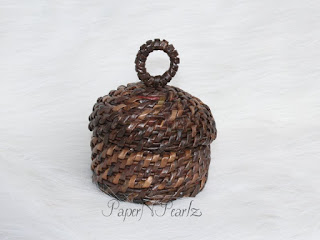The first order for a magazine rack came through during the covid lockdown. So I decided to hunker down and start working on the rack during the end of June. The client gave me the option of choosing my own colours, so decided to go with a combination of dark and light brown. The light brown was after consultation with Little Miss 😄And I must say I am quite happy with the result.
The base of the rack is made of plywood, and I had drilled holes through the wood. Then it was just a matter of decoupaging paper onto the base, so that the plywood is not visible. The wood base ensured that the magazine rack would be sturdy even if a number of books are placed in it.
I liked the pattern in the lower half of the rack. Would have loved to continue in the top bit too, but I guess that would not have looked that great in the middle. So there, it was a regular weave with 2 tubes of paper.
I must say my weaving skills have improved quite a bit and am quite pleased with the way the magazine holder has turned out. Obviously, there are a few mistakes, but nothing glaringly obvious. And I am sure I would get better with a little more practise. What say?
Overall, this has been a fun bit of work and I am truly grateful that the client trusted me with the whole project. I am also supposed to make a pen holder and a tissue holder that goes along with the rack. I will soon get cracking on that!


















































